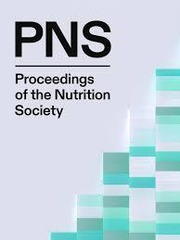No CrossRef data available.
Article contents
Exploring the mediating pathways in the relationship between food insecurity and university students’ average grade
Published online by Cambridge University Press: 09 October 2025
Abstract
Food insecurity in higher education institutions has become a growing concern over the past two decades, with evidence suggesting high prevalence rates and adverse impact on academic performance (1). Food-insecure students are said to score lower grades and less likely to progress through university as compared to their counterparts who are food secure(2). However, little is known about the underlying mechanisms by which food insecurity affects academic performance. The only known pathway in previous studies is via psychological distress or poor mental health (3). The cross-sectional study investigated whether the association between food insecurity and students’ average grade is mediated by coping styles and psychological distress.
Participants (n = 381), recruited from nine UK universities, completed an online survey consisting of the 10-item U.S. Department of Agriculture Adult Food Security Survey Module (4), the 28-item Brief COPE Inventory (5), the Depression Anxiety Stress Scale-21 (DASS-21) (6), a measure of perceived academic impact of food insecurity, self-reported average grade, and demographic information. Pearson’s bivariate correlation was used to examine associations between variables, and structural equation modelling for the hypothesised mediation analysis.
Over half of the participants (58.5%) were classified as food insecure, with 37.8% experiencing food insecurity with hunger. Food insecurity was significantly associated with coping styles—problem-focused coping (r = 0.193, p < 0.01), emotion-focused coping (r = 0.299, p < 0.01), and avoidant coping (r = 0.390, p < 0.01)—as well as with psychological distress—depression (r = 0.341, p < 0.01), anxiety (r = 0.331, p < 0.01), and stress (r = 0.299, p < 0.01). In the final structural equation model, food insecurity did not directly affect students’ average grade (b = −0.072, SE = 0.153, p = 0.637), but had a significant indirect effect via coping styles and psychological distress (b = −0.089, 95% CI: −0.165 to −0.024, p = 0.025), as hypothesised.
This study highlights that the way students cope with food insecurity, and the attending psychological distress can negatively impact academic outcomes. Food insecurity interventions should include components that foster resilience, healthy coping and mental health to mitigate its impact on academic success.
Information
- Type
- Abstract
- Information
- Proceedings of the Nutrition Society , Volume 84 , Issue OCE4: Nutrition Society Conference 2025, 1-2 July 2025 , August 2025 , E274
- Copyright
- © The Author(s), 2025. Published by Cambridge University Press on behalf of The Nutrition Society


